These amusing pictures appear to capture the moment a lost King Penguin tries to hitchhike back home.
The lonesome bird was spotted trying to hitch a ride to the nearby penguin settlement in Teal Inlet, East Falkland, after it became separated from its colony.
The pictures were taken by Paul Chapman, 56, who was heading to a popular fishing area with his wife, Julie. When they first saw the bird he was in four feet of water.
On the couple's way home, they noticed that the penguin had made it to the road and was waddling to the nearest town.
P-p-pick up a penguin? World's loneliest bird is spotted waddling along a road in the Falklands after losing his friends
Amusing pictures appear to capture the moment a lost King Penguin tries to hitchhike back to his colony
Bird was first spotted in four feet of water in Teal Inlet, East Falkland, by Paul and Julie Chapman
Couple saw him again on their way home - he had climbed through a fence and was waddling down the road
By Kate Samuelson For Mailonline
15 March 2016
Daily Mail
These amusing pictures appear to capture the moment a lost King Penguin tries to hitchhike back home.
The lonesome bird was spotted trying to hitch a ride to the nearby penguin settlement in Teal Inlet, East Falkland, after it became separated from its colony.
The pictures were taken by Paul Chapman, 56, who was heading to a popular fishing area with his wife, Julie. When they first saw the bird he was in four feet of water.
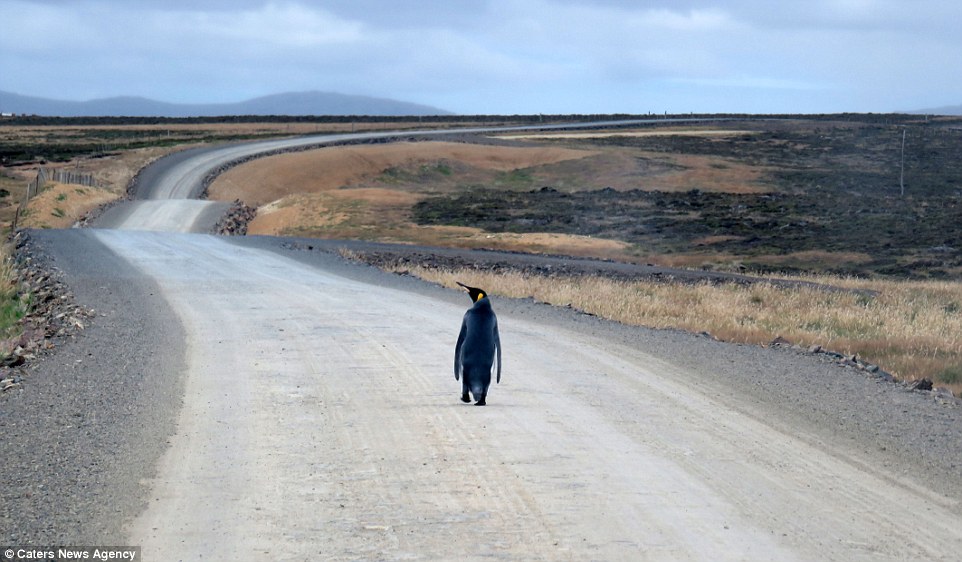
Alone time: The King Penguin was found wandering solo, trying to hitch a ride to the nearby settlement in Teal Inlet, East Falkland, after it became separated from its colony
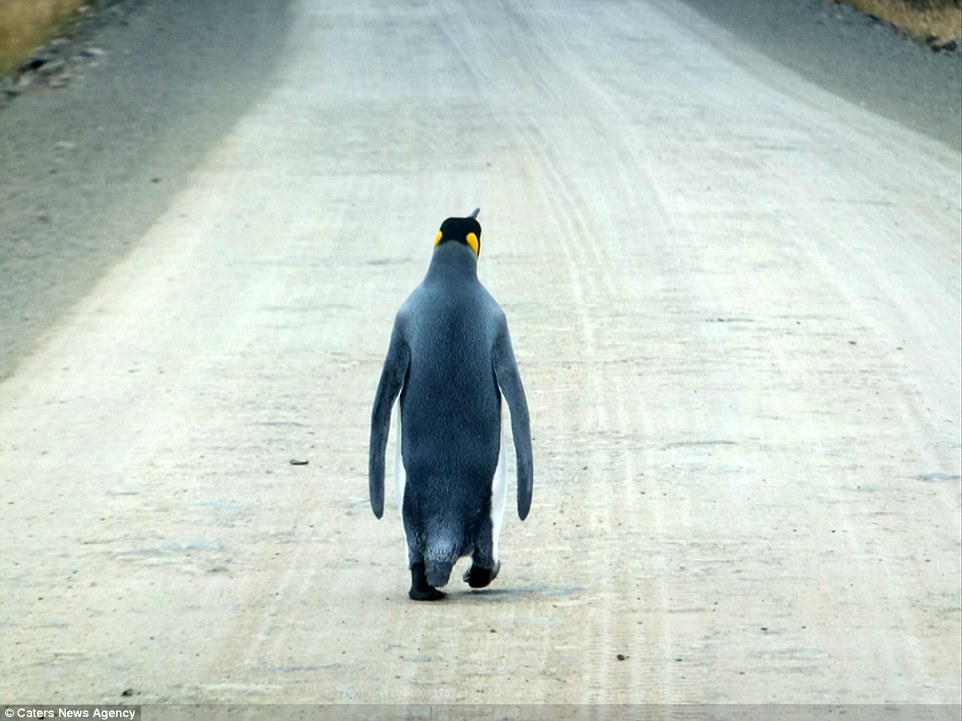
The amazing pictures were taken by Paul Chapman, 56, who was heading to a popular fishing spot with his wife, Julie, when they first spotted the bird, who was in four feet of water. They noticed the penguin on the road later that day, when they were on on their way home
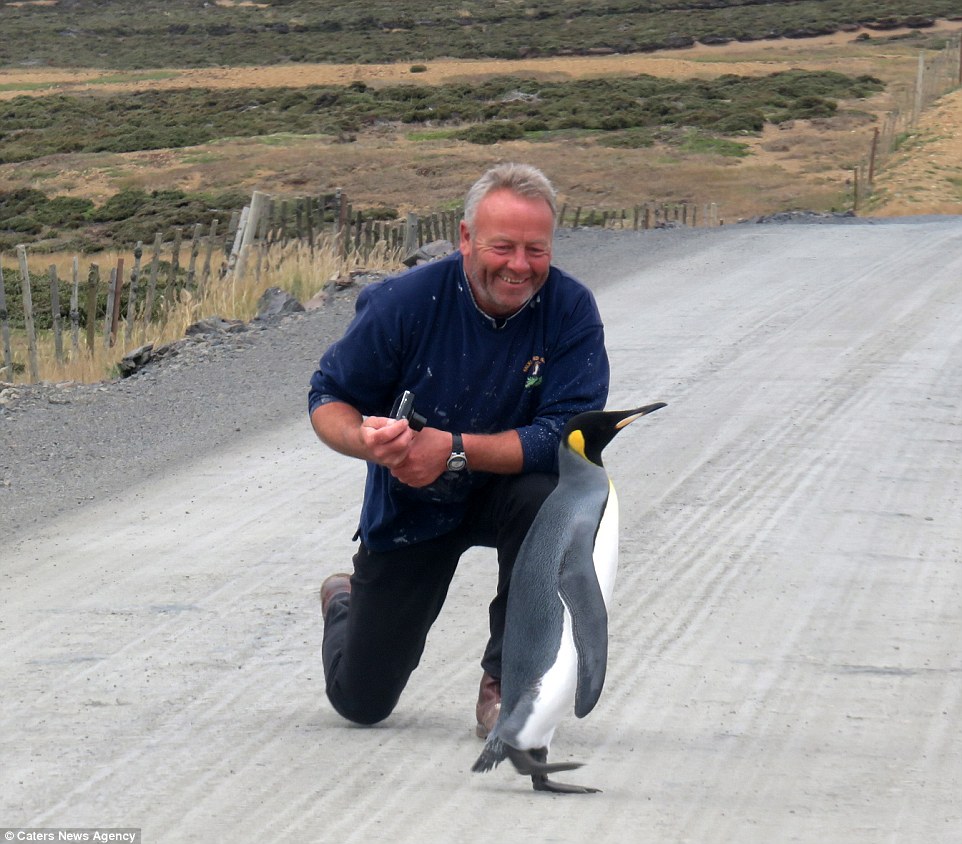
Mr Chapman, pictured above, said: 'It quite impressive the penguin managed to get there. It would have had to get through four feet of water and climb through a fence to reach the road'
On the couple's way home, they noticed that the penguin had made it to the road and was waddling to the nearest town.
Mr Chapman said: 'It quite impressive the penguin managed to get there. It would have had to get through four feet of water and climb through a fence to reach the road.
'When we saw the penguin it wasn't bothered or scared by us and just carried on walking.'
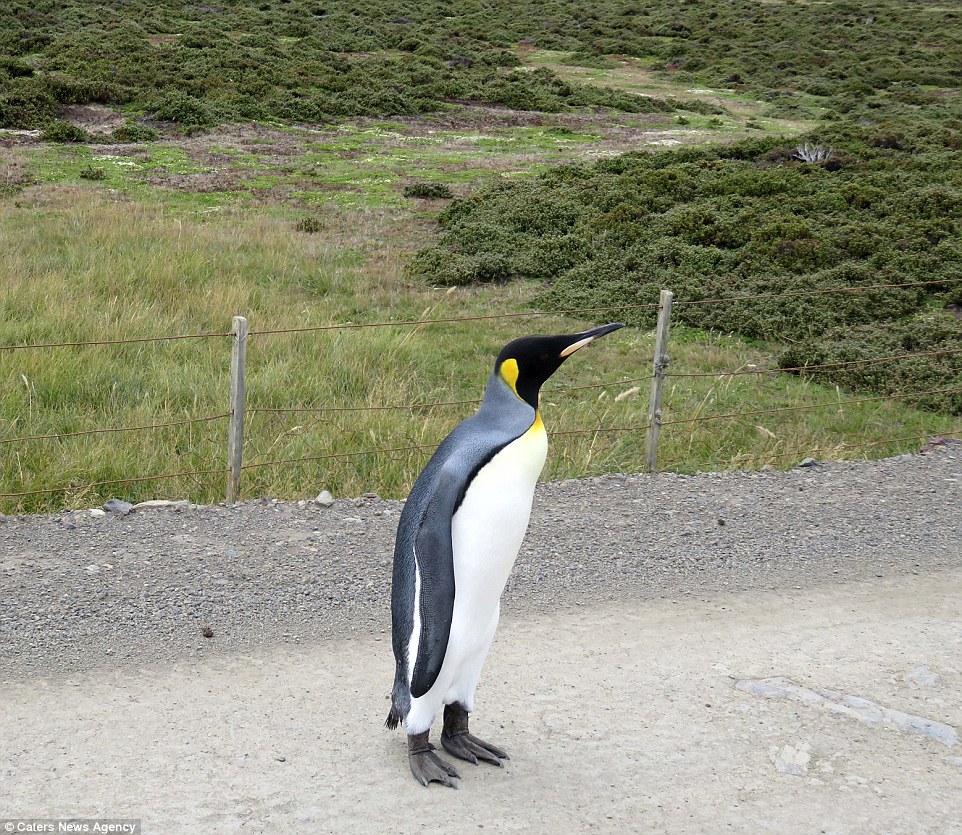
Mr Chapman said that when the penguin spotted him and his wife, it wasn't bothered or scared and just carried on walking
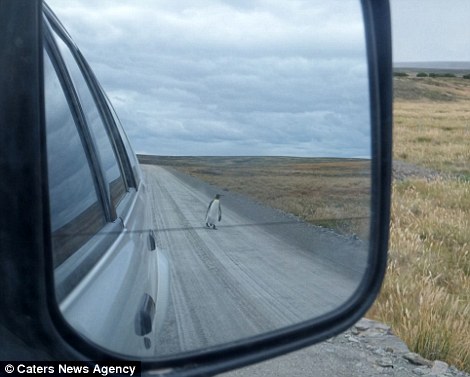
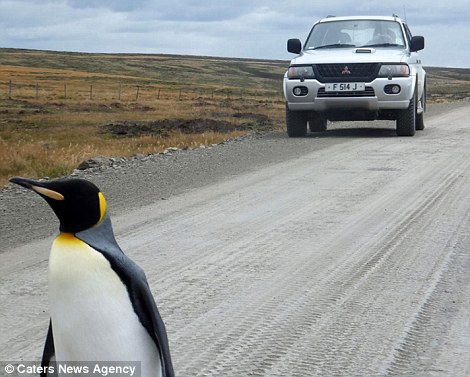
King Penguins - known as Aptenodytes patagonicus in Latin - are the second largest species of penguin, growing as tall as three feet and weighing up to 2.5 stone

The penguin was spotted at Teal Inlet in the north east of East Falkland
King Penguins - known as Aptenodytes patagonicus in Latin - are the second largest species of penguin, the Emperor Penguinare. They grow as tall as three feet and weigh up to 2.5 stone.
They are distinguishable by their orange-tinted breasts, cheeks and beaks.
In the wild they live off small fish, mainly lanternfish, and squid, and are mainly found in the South Atlantic and the northernmost waters of northern Antarctica.
There are believed to be around 2.23million King Penguins and their numbers are increasing.
The lonesome bird was spotted trying to hitch a ride to the nearby penguin settlement in Teal Inlet, East Falkland, after it became separated from its colony.
The pictures were taken by Paul Chapman, 56, who was heading to a popular fishing area with his wife, Julie. When they first saw the bird he was in four feet of water.
On the couple's way home, they noticed that the penguin had made it to the road and was waddling to the nearest town.
P-p-pick up a penguin? World's loneliest bird is spotted waddling along a road in the Falklands after losing his friends
Amusing pictures appear to capture the moment a lost King Penguin tries to hitchhike back to his colony
Bird was first spotted in four feet of water in Teal Inlet, East Falkland, by Paul and Julie Chapman
Couple saw him again on their way home - he had climbed through a fence and was waddling down the road
By Kate Samuelson For Mailonline
15 March 2016
Daily Mail
These amusing pictures appear to capture the moment a lost King Penguin tries to hitchhike back home.
The lonesome bird was spotted trying to hitch a ride to the nearby penguin settlement in Teal Inlet, East Falkland, after it became separated from its colony.
The pictures were taken by Paul Chapman, 56, who was heading to a popular fishing area with his wife, Julie. When they first saw the bird he was in four feet of water.

Alone time: The King Penguin was found wandering solo, trying to hitch a ride to the nearby settlement in Teal Inlet, East Falkland, after it became separated from its colony

The amazing pictures were taken by Paul Chapman, 56, who was heading to a popular fishing spot with his wife, Julie, when they first spotted the bird, who was in four feet of water. They noticed the penguin on the road later that day, when they were on on their way home

Mr Chapman, pictured above, said: 'It quite impressive the penguin managed to get there. It would have had to get through four feet of water and climb through a fence to reach the road'
On the couple's way home, they noticed that the penguin had made it to the road and was waddling to the nearest town.
Mr Chapman said: 'It quite impressive the penguin managed to get there. It would have had to get through four feet of water and climb through a fence to reach the road.
'When we saw the penguin it wasn't bothered or scared by us and just carried on walking.'

Mr Chapman said that when the penguin spotted him and his wife, it wasn't bothered or scared and just carried on walking


King Penguins - known as Aptenodytes patagonicus in Latin - are the second largest species of penguin, growing as tall as three feet and weighing up to 2.5 stone

The penguin was spotted at Teal Inlet in the north east of East Falkland
King Penguins - known as Aptenodytes patagonicus in Latin - are the second largest species of penguin, the Emperor Penguinare. They grow as tall as three feet and weigh up to 2.5 stone.
They are distinguishable by their orange-tinted breasts, cheeks and beaks.
In the wild they live off small fish, mainly lanternfish, and squid, and are mainly found in the South Atlantic and the northernmost waters of northern Antarctica.
There are believed to be around 2.23million King Penguins and their numbers are increasing.
